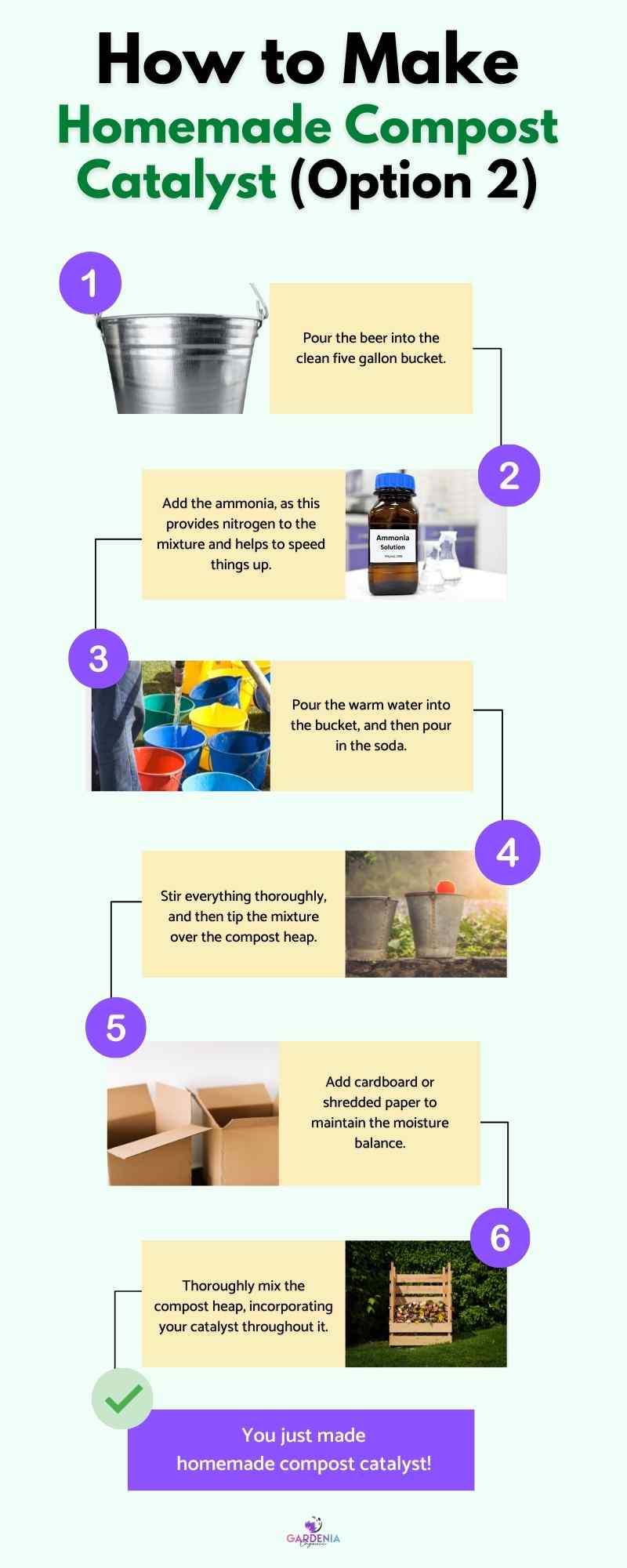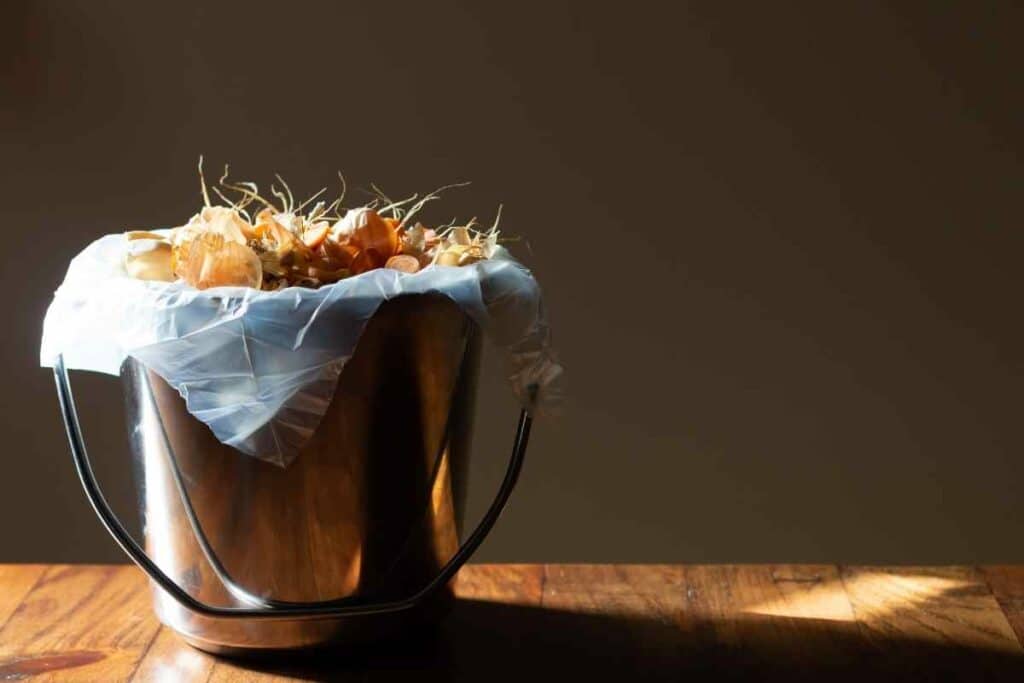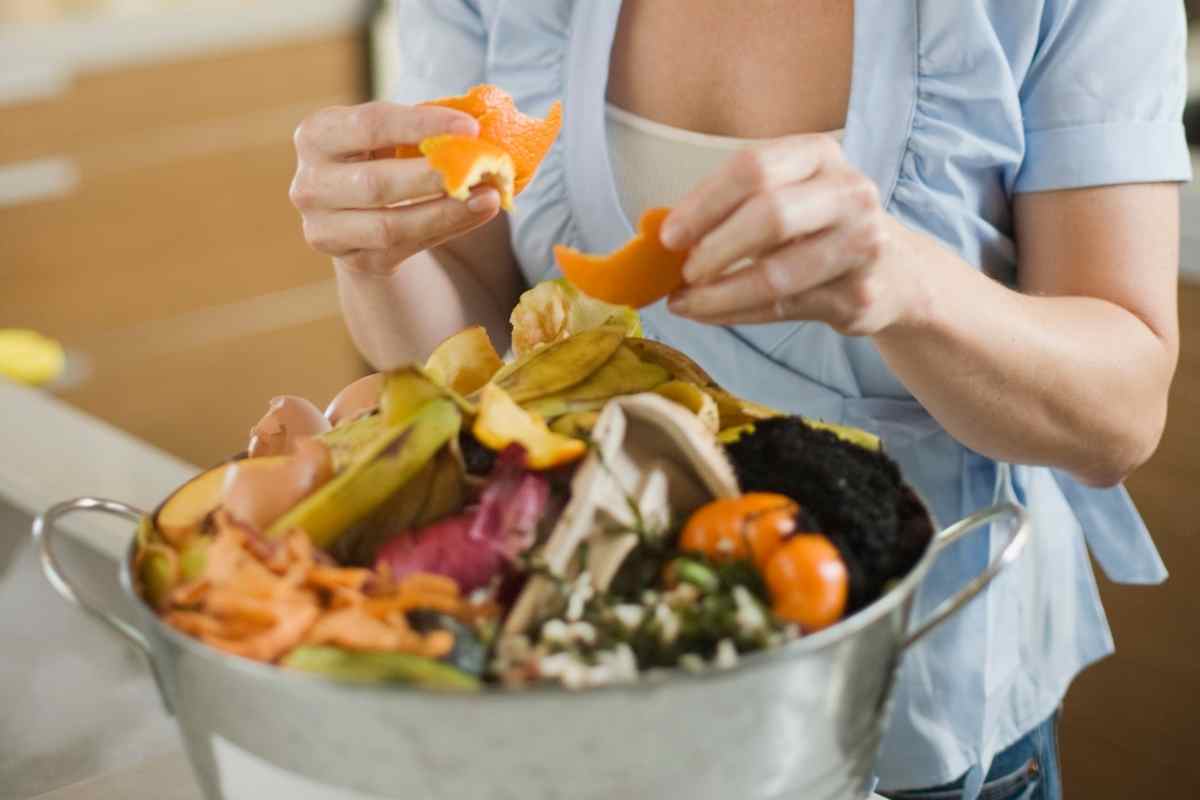If you are making your own compost at home, you have probably found the more frustrating thing about doing so is how long it takes. Compost is not a quick process.
You have to keep mixing and waiting and turning and waiting and building up and waiting, and so on.
So, what can you do to speed this up?
You need some compost catalyst, and you can make this at home very easily! You will need some sugar, some beneficial bacteria, water, heat, a source of nitrogen, and a bucket to mix it all in. Don’t be concerned if that sounds challenging; you can get hold of bacteria easily, and you’ll soon have a homemade compost catalyst.
How to Make Homemade Compost Catalyst (Option 1)
Instead of buying an expensive catalyst, it’s much better to just make it yourself at home.

It isn’t as complicated as it sounds!
You are going to need:
- ½ cup of molasses (this is the bacteria’s food)
- ½ cup of ammonia (this gives the bacteria a source of nitrogen)
- A five gallon bucket
- Enough warm water to fill the bucket to two thirds
- A good scoop of mature compost or garden soil (this is where the bacteria will come from)
- A shovel
Step 1
Grab your five gallon container and fill it to two thirds with warm water.
For a larger compost heap, you can increase the quantities of this recipe, or make several batches.
Step 2
Add the scoop of compost, and then add the ammonia and the molasses.
Step 3
Stir it all together, mixing well. This brings the bacteria from the compost into contact with the nitrogen and molasses.
Step 4
Place your bucket in a warm, sunny place, and leave it for up to twenty-four hours.
Do not leave it for longer than this, unless you are aerating the bucket with an aquarium bubbler or something similar.
The bacteria in the compost will start eating the sugar, triggered by the warmth and food.
They will begin to multiply quickly, and this is exactly what you want with a compost catalyst – lots and lots of bacteria in the water.
Step 5
Once the catalyst has finished, you can simply add it to your compost pile as it is, or strain off the water and just add the solids.
Be aware that adding a lot of water to your compost heap at once can sometimes cause issues.
If you make your compost too wet for too long, it will turn anaerobic and sludgy, so if you’re adding a wet catalyst, you should make sure you include plenty of browns to dry the compost out.
Screw up cardboard or newspaper and add it to the heap, and then stir it in.
Hopefully, the microbes in the compost catalyst will spread throughout your compost heap.
The more beneficial bacteria you have in the heap, the faster it will compost – because the bacteria are doing the composting.
Quick Tip: You may want to set a reminder so that you don’t leave this mixture for more than twenty-four hours. It will turn anaerobic and some of the good bacteria may be lost – and it will smell terrible.
How to Make Homemade Compost Catalyst (Option 2)
If that recipe did not appeal, there are other options.

Compost catalyst does not have to be made in exactly one way to get results, so let’s look at another recipe.
You will need:
- A five gallon bucket
- A shovel
- A can or two of soda
- ½ cup of ammonia
- 6 ounces of beer (you may wish to open this and allow it to go flat for twenty-four hours before using it)
- 2 gallons of warm water
Step 1
Pour the beer into the clean five gallon bucket.
Step 2
Add the ammonia, as this provides nitrogen to the mixture and helps to speed things up (the bacteria require nitrogen to activate).
Step 3
Pour the warm water into the bucket, and then pour in the soda.
It must be normal soda, not diet, because you need the sugar in the soda in order to help the bacteria activate.
Step 4
Stir everything thoroughly, and then tip the mixture over the compost heap.
It should seep into it, carrying the bacteria, the sugar, and the nitrogen in, and kickstarting the whole process.
Step 5
Add cardboard or shredded paper to maintain the moisture balance.
Step 6
Using your shovel or a garden fork, thoroughly mix the compost heap, incorporating your catalyst throughout it.
This mixing will help to aerate the compost and will distribute the bacteria through the pile.
What Does Compost Catalyst Do And When Should I Use It?
The catalyst essentially adds some highly active microbes to your compost heap.

If your compost has become inactive or it is a new pile that does not yet have much bacteria in it, this is very important, because the bacteria is responsible for making the compost heap operate.
Without bacteria, your compost will just sit there and do very little.
Although bacteria should soon fill a compost bin, especially an open air one, you can speed things along by adding lots of bacteria and food.
In the recipes above, you get the bacteria either from compost (recipe one) which will contain bacteria already, or from the yeast in beer (recipe two).
You activate it by feeding it with sugar, and this ensures that when it goes into the compost heap, it is already eating and breeding fast.
This should give your compost heap a boost to get it going and speed everything up.
Your Call: A healthy and established compost heap should not really need a compost catalyst, so you needn’t bother with it, but for a new or unbalanced compost heap, a catalyst may get everything going.
Conclusion
You can easily make compost catalysts yourself at home, and you don’t need to spend money on expensive additives.
Just use a bucket, warm water, some bacteria, and some sugar.
The bacteria will activate, start feeding on the sugar, and start multiplying, and when you add it to your compost heap, it will set everything going.
